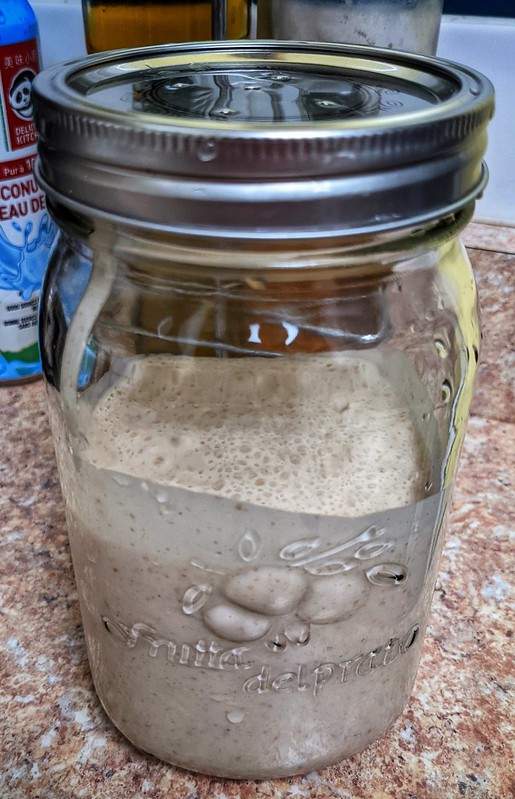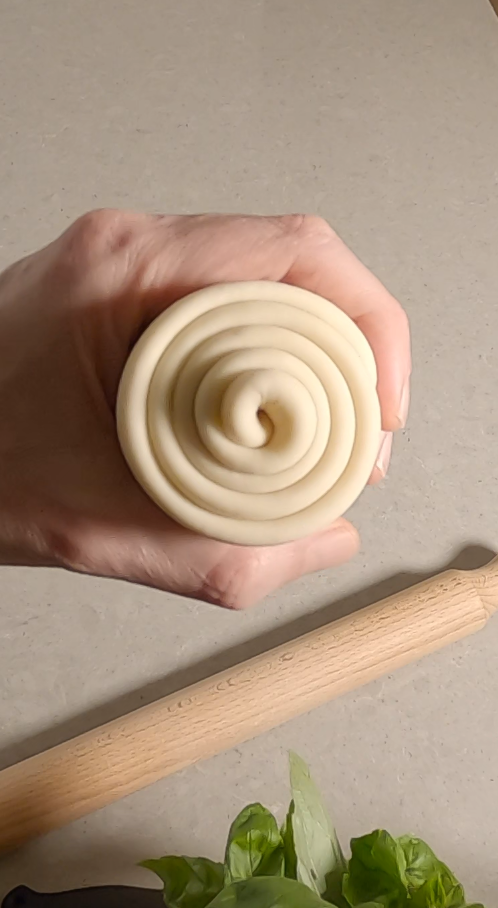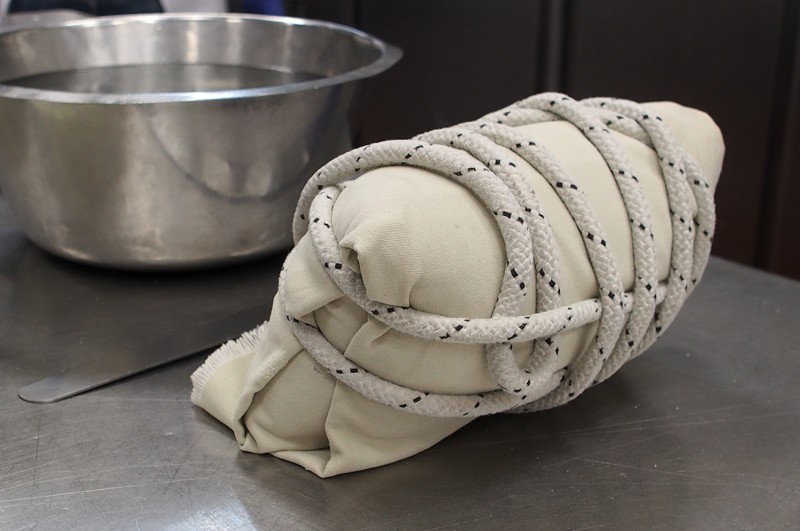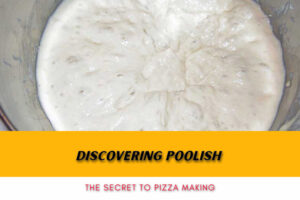
The top 6 questions about Sourdough
Last updated on November 12th, 2023 at 07:10 pm
Internet is a great source of information for almost every topic. But are you sure you can find the truth about sourdough maintenance, creation and use? In my top 6 questions about sourdough I want to talk you about this topic from a completely different and new perspective. My goal for today is to provide you an initial structured view about the sourdough world. In this way you can decide if you want to join this adventure, why and how.
I started thinking about writing this article after I published my sourdough feeding calculator page. What I noticed is that on some well known websites – considered the best in terms of sourdough information – we miss such a basic tool. Moreover I realized that beginners struggle to understand the real implications that maintaining and using sourdough require.
In this article I want to take a different approach to the topic of sourdough. I want to answer some of the most important questions that every sourdough owner (or willing to be) will before or later ask to self:
- Sourdough types: stiff sourdough and liquid sourdough
- what is Italian style stiff sourdough?
- What is the difference between levain and sourdough starter?
- How much efforts sourdough maintenance requires?
- Can I convert yeast to sourdough in a recipe?
- How can I create sourdough?
- What is the advantage of using sourdough?
- BONUS: key resources for your stiff sourdough
Let’s go ahead and let me answer to what I consider the top 5 questions about sourdough.
Sourdough types: stiff sourdough and liquid sourdough
Before going to the succulent part of the article, answering to the top 6 questions about sourdough, I want to provide you a clarification. When we read about Sourdough on the Internet, we commonly refer to the liquid sourdough. The liquid sourdough is probably just an Italian definition (I admit I cannot be sure about that). However, we consider a liquid sourdough the one that has at least 100% hydration on the flour. For example every 100 grams of flour we expect to have 100 grams of water.

As you can understand, with such amount of water, the sourdough becomes almost liquid. I personally consider this as the sourdough for bread. Not because it really is but mostly because it’s used by majority of the people online with such scope. In Italian we call the liquid sourdough li.co.li. (lievito in coltivazione liquida). The plain translation would be something like “yeast in liquid environment“.
The typical Italian stiff sourdough has hydration between 40% and 50%
Then there is a different type of Sourdough: the stiff sourdough. This a sourdough used mostly for pastry. But of course not only for that! The huge difference than liquid sourdough is – believe it or not – the hydration. The typical Italian stiff sourdough has hydration between 40% and 50%, even though the real range to use is much smaller. Moreover there is another big difference between liquid and stiff sourdough: the way it is stored. You can store is “free”, in water or in bag. I use to store it in a jar but in a form of snail, which is typical for storing it in water or bag.

Subscribe now to my newsletter!
It’s free, you will get a recipe notebook to download and you will never lose my new tips & tricks around the world of Italian pizza. I hate spam too, so no worries, subscribe with confidence:
What is Italian style stiff sourdough?
The answer to this question is already in the previous paragraph about sourdough types. However I can add a bit more to that. So, let’s start repeating again: the Italian style stiff sourdough is in fact stiff! So it is using hydration between 40% and 50% with an effective range between 42% and 48%.
I think this is already clear.. so is there anything else that makes a sourdough Italian? Yes! The way it is stored!
The standard sourdough starter, the one I defined liquid, is stored in jars. The stiff sourdough can be store in three different ways:
- free
- tied up in a bag
- in water
The free storing foresees to have the stiff sourdough in a jar. So nothing changes here. You create your dough ball of sourdough and keep it in a jar.
The second way of storing stiff sourdough is coming from the tradition in the famous city of Milan in the north of Italy. It requires that you create a sourdough in a form of snail (exactly as I normally do in my other articles). After that you close it in a plastic bag for food and finally you have to tied it up in a bag:

The third and last way of storing Italian stiff sourdough is in water, directly from Piemonte region, again in the north of Italy. Also in this case you need to create the sourdough in form of a snail and then have it in a container full of water.
If you want to maintain the stiff sourdough at home I think that the first method is the easiest one.
What is the difference between levain and sourdough starter?
I was not sure to include this one in the top 6 questions about sourdough. However I am reading very often on the web that there is a distinction between the so called levain and the sourdough starter. In fact there is a recurring question about what is the difference between sourdough and levain. Actually I should be more precise. The main question is about differences between sourdough starter, levain and sourdough.
On some websites the authors are explaining that they have different functions apparently, like they are different products. They explain that the sourdough is the one that you keep alive with feeding. On the other end the sourdough starter and/or levain, is what you actually use as fermentation agent in the recipes.
From my point of view such distinctions do not make any sense. Firstly, sourdough and levain are the exact same thing, just in different language. The latter being the french name of the sourdough.
Sourdough, sourdough starter and levain are the exact same thing!
There is also no reason to distinguish between sourdough, sourdough starter and levain. At the end of the day we are talking about the same product used in different ways. So, why to add such confusion?
Subscribe now to my newsletter!
It’s free, you will get a recipe notebook to download and you will never lose my new tips & tricks around the world of Italian pizza. I hate spam too, so no worries, subscribe with confidence:
How much efforts sourdough maintenance requires?
This is one of my favorite questions! And you know why? Because for a lot of people the sourdough is intimidating. I was also very reluctant to make my sourdough. The most common idea is that you need to dedicate a lot of time to it. Let alone a lot of people think you need to keep in control a lot of variables, it’s hard to create from scratch, so on and so forth.
Where is the truth?
So, the sourdough maintenance requires efforts. That’s for sure. The most important is to be consistent. It means that you need to make sure to dedicate some time to it at least every 3 or 4 days. In terms of practical time, however, it’s not that much! We are talking about roughly 20 minutes for the feeding process. That’s it! I talked about it in this article.
But there is another part of the story that few people are considering when they do not have sourdough. You will fall in love with sourdough! The feeding process soon becomes a pleasure and relaxing activity. The recipes you are going to make will be so tasty and digestible that you can hardly stop using it. Also your friends will be so excited to try your bread or your pizza with sourdough! It such exciting that several people give name to their sourdough.
At the end of the day, the efforts are totally paid back with the satisfactions you have.
I want to be honest though: it’s not everything shiny. There are moments of the sourdough journey where you have to understand why your sourdough did not work properly or how to have it back in shape. Also, before or later, you need to figure out how to store the sourdough during holidays. But no worries! There is an answer to everything 🙂
Can I convert yeast to sourdough in a recipe?
The short answer is Nes. It’s not an error, it’s a mix between No and Yes.
In theory you can convert the amount of standard yeast you normally use in a recipe to sourdough. Actually there are also some calculators online that help with that.
However the reality is a bit different. Preparing a recipe with sourdough or yeast is not just about how much time the dough will take to rise. You are using completely different elements in the dough. Essentially a different chemical process will happen in the dough and also the final results will be very much different. In some cases you need to adjust the process to compensate the different structure that a sourdough creates (especially when making pizza).
Preparing a recipe with sourdough or yeast is not just about how much time the dough will take to rise
My recommendation is to think about sourdough as a different ingredient in your recipe. Think at it as you want to make tomato sauce with fresh tomatoes instead of peeled tomatoes from a can. It still is a tomato sauce but process and taste will be different.
So, instead of – for example – bending a bread recipe with yeast, just find a bread recipe with sourdough. Or if you are already good enough with dough, create your own recipe!
Subscribe now to my newsletter!
It’s free, you will get a recipe notebook to download and you will never lose my new tips & tricks around the world of Italian pizza. I hate spam too, so no worries, subscribe with confidence:
How can I create sourdough?
You have two options to create sourdough. The first is the easiest one: ask to a friend who owns already some sourdough to share a small amount. From that you can start feeding and create your sourdough.
The second option is to create sourdough from scratch. As we are talking here about Italian stiff sourdough, I have a guide for you. In the mentioned article I explain all steps needed to create stiff sourdough starting only with flour and water. The process is just amazing. I think that when I did it was the moment when I felt in love with stiff sourdough.
Looking at the evolution of the creation of stiff sourdough makes you incredibly happy and satisfied. You should be try that at least once in your life!
What is the advantage of using sourdough?
This is a juicy one! I could no miss it in my top 6 questions about sourdough! It’s absolutely fine if you are now asking: Stefano, all nice words, seems you are trying to convince me… but you miss a point: why should I use sourdough? Why should I invest my time in maintaining a stiff sourdough when I can buy yeast at super market?
Well, all fair questions. So let me try to summarize a few points to explain why I think it’s worth to have a stiff sourdough.
Actually, thinking about it, I will probably need a dedicated article. So let me share some food for your thoughts. You can then let me know if you want to go deeper in some of them:
- digestibility – healthy food
- taste
- longer “shelf-life“
- natural yeast
- independence
- pleasure and relax
Some of the points are pretty obvious. The better digestibility of the dough, for example, is now scientifically proven. With sourdough your pizza and bread are more digestible. Also, they can be stored for longer time without using low temperatures (shelf-life).
The taste of the dough with sourdough is unbelievable! You have to try to understand. There are not enough words to describe.
What do you think about having something natural stored at home, independence, pleasure and relax? Let me know if you are curious!
BONUS: Key resources for your stiff sourdough
I want to conclude this article of my top 6 questions about sourdough with a stiff sourdough resource summary. If you want to have your stiff sourdough they will be handy. Because the truth about sourdough maintenance in the long run is that you need to have the right resources to consult at the right time.
The good news is that I am going to update this list while I add content on my website. In fact all links I am sharing are in this website! Sharing is caring, right?
So here we go with everything you need to start your stiff sourdough, maintain it and use it:
- How to create stiff sourdough from scratch
- Everything about stiff sourdough maintenance
- How to create stiff sourdough for your recipe
- Sourdough feeding ingredients calculator
Enjoy your Italian stiff sourdough in your next recipe!
Subscribe now to my newsletter!
It’s free, you will get a recipe notebook to download and you will never lose my new tips & tricks around the world of Italian pizza. I hate spam too, so no worries, subscribe with confidence:




1 Comment